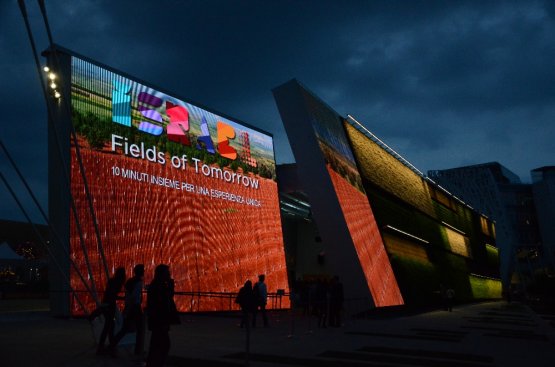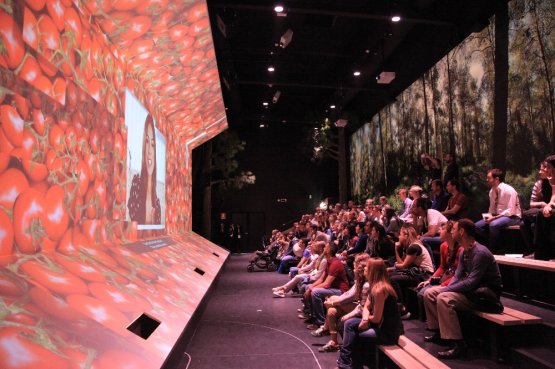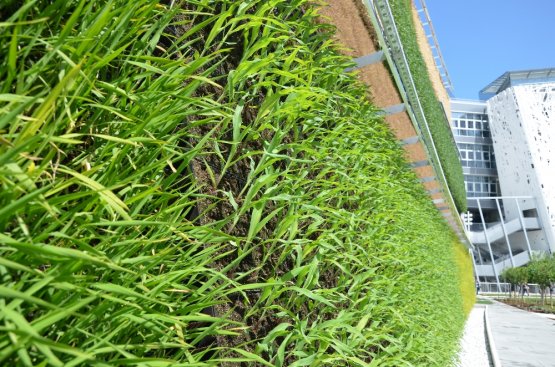“Feeding the planet” is the focus of Expo 2015. One of the pavilions develops this theme by illustrating the history of a country 470 km long and 135 km wide (in its widest point) with a territory largely occupied by desert: there are few cultivable areas and very little water. Despite this, and the well-known turbulences, this country has managed to transform this arid ground into a flourishing garden in less than 70 years time. Israel presents itself at Expo as a model for an advanced and sustainable agriculture.
The “Israeli miracle” was accomplished thanks to their obstinacy, of course; yet this would have certainly not been enough had it not been helped by the constant introduction of innovative farming methods.

The Israeli pavilion at dusk
The “emblematic structure” of the pavilion is 70 m long and 12 m high; a sort of vertical mosaic, an overhanging field where wheat, rice and corn grow, that is to say the main vegetal food resources. It is a magic trick formed by modules, made possible by the fact that each section includes a computerised irrigation system that saves between 80% and 90% water.
In other words, it explains the story of one of the great Israeli ideas in the agricultural field, drop-irrigation, which together with water desalination (or irrigation with salted water, for specific plants) and its recycling, has allowed to cultivate what was once just sand.

Cherry tomatoes were invented by Israeli researchers
And what products too! Cherry tomatoes, a variety introduced in 1989 by Israeli multinational
HaZera Genetics. Or the
super-wheat, an “invention” created in 2010 by a team of agronomists from the
Volcani Institute, the experiment centre of the ministry of Agriculture in Tel Aviv. And then there’s strawberries (they obtained a variety that grows all year round), olives, a thousand different spices…
Yet with drop irrigation it is possible to cultivate rice too, thanks to innovative systems that Israel exports all around the world, from Senegal to India. “Fields of Tomorrow”, that is, agriculture on rocky grounds, new irrigation techniques, cultivating vegetables in the desert, improving the quality of seeds. Or perhaps the “vertical field” which exemplifies a real new technology, vertical planting.

A detail of the "vertical field"
Finally, the relationship between Israel and the world is exemplified thanks to its cooking, which you can taste at the end of the visit, in the small restaurant inside the pavilion. As we recently illustrated
here and
here, it is the meeting of different traditions – Arab, Greek, Spanish, French, America, and even Italian – blended together in a sort of very fertile “natural fusion”:
shakshuka (a sauce made with tomatoes, peppers, spices and eggs),
hummus,
majadera (with lentils, bulgur and golden onion aromatised with cinnamon),
hraimi (fish in tomato and pepper sauce),
tahina (a sesame sauce),
tabulé (a salad with bulgur, mint, parsley, coriander and cherry tomatoes) and so on.
Israelis are 8.3 millions, 0.0015% of the world population: however, they express their desire to share their innovative knowledge with the world, to sustain the development of the world. They call it “feeding creativity”. Creativity for life.